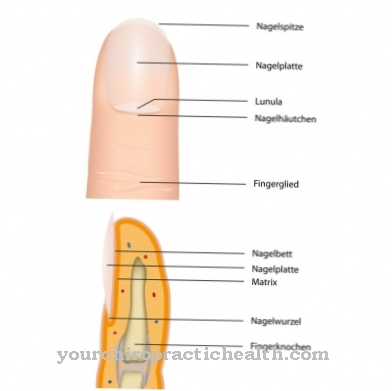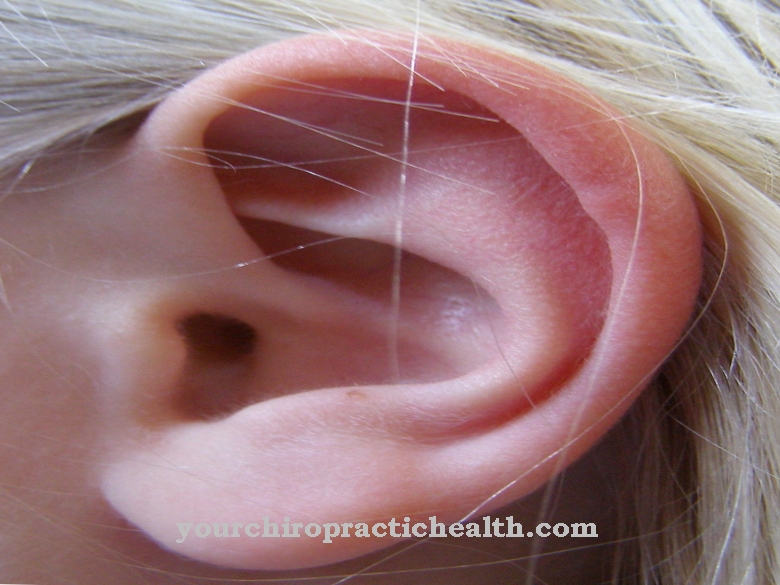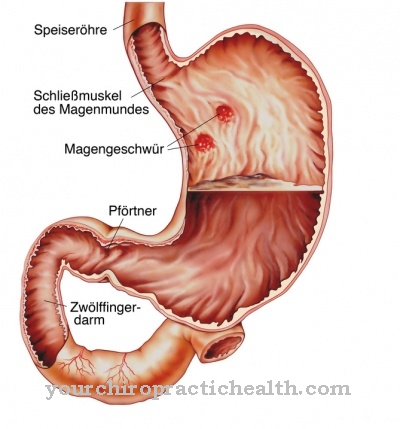The female breast belongs to the secondary gender characteristics and can vary greatly in terms of size and shape. The primary function of the female breast is to ensure that the newborn child is fed with breast milk.
What is the female breast?

The female breast (mom) develops as a paired secondary sexual characteristic only during puberty. Each of the two female breasts consists of a glandula mammaria (breast gland body) as well as connective tissue and fatty tissue, which outside of breastfeeding can make up up to 80 percent of the breast tissue and determines the individual size and shape.
From the onset of puberty, the female breast is constantly subject to hormonal fluctuations, which correlate with the menstrual cycle, hormonal changes during pregnancy and breastfeeding, and age-dependent changes in the hormonal balance and, in addition to weight fluctuations, also influence the structure and shape of the female breast.
With increasing age (around 40 years of age), the mammary gland body is gradually replaced by connective tissue and later also by fatty tissue, and the mammary tissue loses volume and elasticity.
Anatomy & structure
The female breast lies between the third and seventh rib on the pectoral muscle. Each of the paired mammary gland bodies (glandula mammaria) has 15 to 20 individual glands (lobi, glandular lobes), which are separated from each other by loose connective tissue.
These in turn branch out in a tree-like manner into grape-shaped lobules (lobules), the ends of which consist of milk vesicles (alveoli), in which breast milk is produced during breastfeeding. The single glands radiate into the nipple (nipple) via a ductus lactiferi (main duct or milk duct). Each milk duct unfolds like a sac like a sinus lactiferi (milk sac) in front of the mouth, which acts as a milk reservoir during breastfeeding.
The nipple is enclosed by an individually differently sized and strongly pigmented atrium (areola mammae). The areola mammae has numerous sweat and sebum glands. The muscle and nerve cells located there ensure that the nipple is erect if stimulated accordingly (including sexual arousal, touching the child during lactation).
In addition, lymph vessels and blood vessels run through the female breast. The lymphatic drainage from the breast is primarily ensured through the lymph nodes in the armpit.
Functions & tasks

The primary biological function of the female breast consists in feeding the newborn child with breast milk (lactation). The mammary glands of the female breast produce breast milk during breastfeeding, with which the infant is adequately supplied with nutrients.
It also contains antibodies that give children, whose immune system is not yet developed, sufficient immune protection. Even during pregnancy, a type of first milk (colostrum), which is very rich in antigens and proteins, can form.
In the areola mammae (areola) there are 10 to 15 small nodules or sebum glands (Montgomery glands) arranged in a circle, which ensure apocrine secretion postnatally. On the one hand, they protect the skin of the breastfeeding breast and ensure an air seal between the baby's mouth and the nipple, which makes the suckling process easier.
In addition, the milk sacs serve as a milk reservoir during breastfeeding and take on the pumping function. In addition to this primary function, it is assumed that the female breast has developed as a specifically human sexual dimorphism, which is supposed to exert an attraction on potential sexual partners or reproductive partners. In particular, the nipples of the female breast are considered to be the erogenous zone.
Illnesses & ailments
The female breast can be subject to various genetic or acquired deformities or malformations. Possible breast abnormalities include an aberrant breast (abnormally localized breast tissue), polythelia (more than two nipples), acquired malformations such as breast hypertrophy (oversized breast) or mastoptosis (sagging breast), asymmetries such as congenital anisomastia (breasts of different sizes) and postoperatively or traumatically acquired deformations.
In polymastia, excessive glandular tissue develops along the milk ridges. In breastfeeding mothers, inflammation of the mammary gland can often be observed, which is triggered by bacterial or viral pathogens and which is usually spread via the lymphatic vessels.
In the second half of the cycle, water retention can lead to a feeling of tension in the breasts (mastodynia), while a hormonal imbalance between progesterone and estrogen levels can trigger benign remodeling processes in the mammary gland tissue (mastopathy).
As a result of benign remodeling processes in the glandular tissue, cysts and a fibroadenoma (benign tumor-like neoplasm) or milk duct papilloma can also manifest themselves. Malignant changes in the female breast (breast carcinoma), one of the most common tumor diseases in women, include ductal (neoplasm of the milk ducts) or lobular carcinomas (neoplasia in the lobules), inflammatory breast carcinomas and Paget's carcinomas (mostly neoplasms of the nipples arising from ductal carcinomas ).













.jpg)

.jpg)
.jpg)











.jpg)